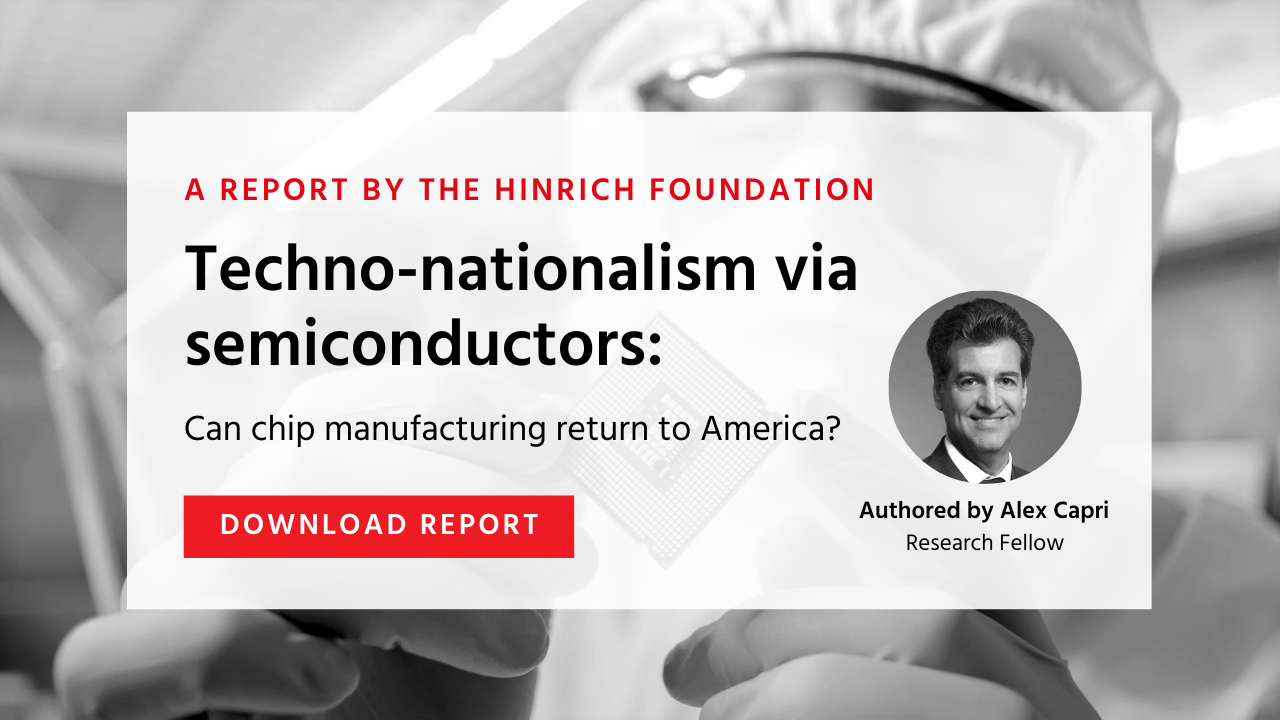Published 23 August 2022
Industrial policy and amorphous economic frameworks agreements have replaced market access commitments in the US strategy to build trade blocs. The subtext is China.
For reasons both economic and geopolitical, countries have sought for decades to create trade blocs through the establishment of preferential trade agreements. The North American Free Trade Agreement (NAFTA) in 1994 was the first noteworthy example, but there are plenty of subsequent examples, up to and including the Comprehensive Partnership for Trans-Pacific Partnership (CPTPP) in 2018.
The formula for creating these trade blocs is straightforward: deepen economic integration among the parties through the reduction or elimination of tariff and non-tariff barriers, ease investment restrictions, and grant market access commitments that go beyond those required by the WTO. The default vehicle for achieving these ends has been so-called WTO-plus free trade agreements (FTA).
Forget about all that now
The allure of traditional trade and investment liberalization is rapidly waning, especially in the United States, where free trade agreements are now considered politically toxic. But in a time of rising geostrategic tensions and increasing weaponization of trade, the desire for friendly trade blocs is greater than ever. The US continues to seek the same result—the establishment of trade blocs—but it is now attempting to do so without granting further market access through FTAs.
In their place, the US and others are now pursuing broader, more amorphous economic framework agreements or cooperative councils. For example, the Biden administration has signaled that US reentry into the CPTPP is a non-starter. Instead, it has proposed the Indo-Pacific Economic Framework (IPEF) as its primary regional trade initiative. Attempts have been made in the past to forge a free trade agreement between the US and the European Union, most recently the Trans-Atlantic Trade and Investment Partnership (TTIP), which was pursued to no avail during the Obama administration. Instead of trying to revive TTIP, the US and EU established the Trade and Technology Council (TTC) early in the Biden presidency. Despite their close relationship, there is no expectation of a free trade agreement between the US and Japan. Instead, the US-Japan Competitiveness and Resilience Partnership was established earlier this year to broaden and deepen economic cooperation.
All these initiatives share several common characteristics. Most importantly, the US is not making any market access commitments. None of them require potentially contentious Congressional approval. Binding commitments are few and enforcement mechanisms are vague or nonexistent. Members instead pledge to cooperate on a host of trade and other economic issues, and in some instances to pursue joint research and investment. The unstated subtext appears to be a desire to displace China from the center of global supply chains and help ensure that it does not further close the gap in key technology areas. Industrial policy, as seen in recent legislation to reshore chips production, also appears to be part of the strategy.
The theory of the case
Can looser economic initiatives, which eschew trade liberalization and market access, shape trade flows and create trade blocs as effectively as legalistic free trade agreements? The US thinks so, and the theory of the case appears to go something like this:
Think of tariff and non-tariff barriers as the hard infrastructure—the brick walls of trade. They can either hinder or facilitate trade flows based on how their height is adjusted for one trade partner relative to another through preferential trade agreements. Technical standards, export controls, transparency requirements, investment reviews, and labor and environmental standards, are the soft infrastructure. They can exert a less obvious but sometime more important influence on how and where trade flows.
These new framework agreements focus on the soft infrastructure. By facilitating cooperation, coordination, and perhaps even commonality across these issues, the parties are essentially creating ecosystems. Economic integration deepens not as a result of trade barrier reductions, but rather in response to the need or desirability of doing business with partners that maintain similar labor protections or adhere to compatible technical standards. Trade with others outside the bloc can be disincentivized due to the need to adhere to commonly agreed export controls or environmental requirements. Trade friction within the bloc gets smoothed over while impediments to trade outside the bloc rise.
Unilateral actions, especially in the form of industrial policy, can provide a complementary push or pull. The CHIPS and Science Act, recently passed by the US Congress, for example, provides $52 billion in subsidies for companies to make chips in the US on the condition that they do not expand or upgrade advanced chip manufacturing in China for 10 years. This stipulation is causing Samsung and SK Hynix to rethink their plans for China.
The US has been forthright in shifting its strategy from FTAs to ecosystems, but it is not the only country to recognize that trade and investment flows can be shaped by the soft infrastructure that surround them.
China, for example, has long recognized the centrality of technical standards setting to its long-term economic development objectives. A strong emphasis on vigorous participation in international standards-setting bodies is incorporated in its national blueprint for industrial development. Global standards in sectors such as 5G, AI, and the architecture of the internet itself, will increasingly be Chinese or heavily influenced by China. Trade flows are likely to follow.
A post-FTA world?
It remains to be seen if the creation of de facto trade blocs through the establishment of common ecosystems rather than traditional FTAs will succeed. The immediate test case is the IPEF. For a variety of reasons, not the least of which is a US presidential election looming in 2024, the IPEF could easily crash and burn.
In any case though, the emergence of the “ecosystem approach” provides a striking commentary on how much the trade landscape has shifted. While trade is not viewed as being any less important than it has been for the past three to four decades, it is seen very differently. The full-bore, unvarnished pursuit of free trade no longer seems to make as much sense. Rising geopolitical tensions, a highly disruptive pandemic, and the first major European war in 75 years have all provided a timely reminder that trade has the potential to bring not only economic benefit but also risk and vulnerability.
While still eager for the benefits of trade, countries are now bringing an increasingly cautious, if not defensive, posture to their trade relationships. For the US, a market that has historically been among the world’s most open, additional market-opening FTAs have lost their appeal. Attempting to weave together tighter trade relationships with key partners without the enticement of greater market access demands innovation and brings uncertainty.
WTO market access commitments previously defined the floor and countries voluntarily raised the bar in self-selected FTAs designed to integrate the signatories more deeply. Trade relationships are now being shaped by a different set of assumptions, considerations, and concerns. While it is still too early to be sure, we might be on the verge of a post-FTA world—for better or for worse.
© The Hinrich Foundation. See our website Terms and conditions for our copyright and reprint policy. All statements of fact and the views, conclusions and recommendations expressed in this publication are the sole responsibility of the author(s).





